
Origami is the art of paper folding, which is often associated with Japanese culture.
The goal is to transform a flat square sheet of paper into a finished sculpture through folding and sculpting techniques.
Modern origami practitioners generally discourage the use of cuts, glue, or markings on the paper.
The “invention” of folding paper probably followed soon after the invention of paper itself. Paper was first invented and popularized in China, and many Chinese speculate that origami originated from Chinese paper folding.
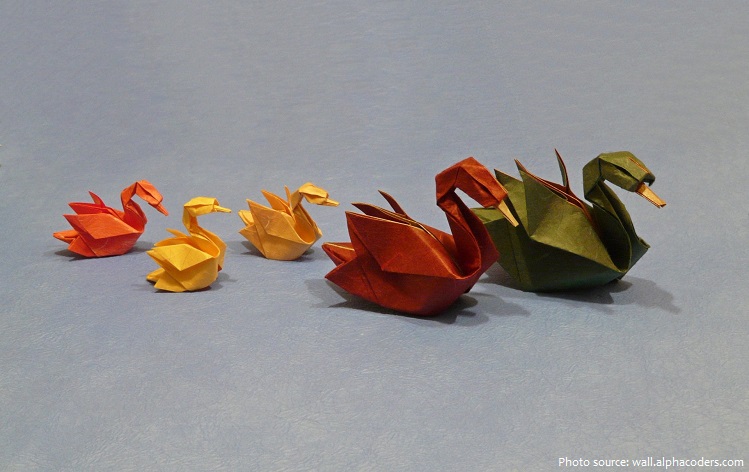
The earliest known traditions of Japanese paper folding were of ceremonial origin, such as the Japanese noshi (white paper folded with a strip of dried abalone or meat, attached to gifts and considered a token of good fortune), first recorded during the Muromachi period (1392–1573).
Origami was initially used only for religious purposes due to the high cost of paper. When new production techniques made paper cheaper and more available, origami became popular as a form of entertainment and traditional paper figures such as the crane were developed – during this period, the first two origami books were published.
A type of European origami evolved independently – the folded baptismal certificate of the 16th century representing a little bird was one of the only models developed outside of Japan.
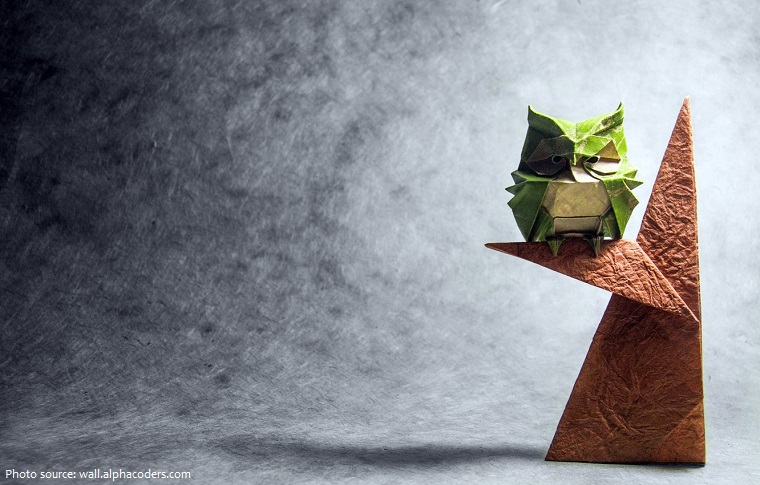
The first book about origami was Sembazuru Orikata (Thousand Crane Folding) written by Akisato Rito and published in 1797. This book was more about cultural customs than a series of instructions, however. There is a traditional story in Japan that says if a person folds 1,000 paper cranes, they will be granted one special wish.
Origami was initially known as orikata – folded shapes. In 1880, however, the craft became known as origami. The term origami comes from the Japanese words oru – to fold and kami – paper. It is not known why this term was chosen, although scholars have speculated that the characters for this term were simply the easiest for schoolchildren to learn to write.

The modern popularization of origami is largely attributed to Akira Yoshizawa, who is credited with tens of thousands of original designs. In 1954, he published Atarashi Origami Geijutsu (New Origami Art), which laid the foundation for what is now known as the Yoshizawa-Randlett system of notation for origami folds, now the de facto standard, which uses dashed and dotted lines to represent mountain and valley folds, respectively.
Today, origami is a popular hobby in Japan for both children and adults. Before the advent of television and video games, origami was a common form of indoor entertainment for Japanese children.
There are many different types of origami, and there is no single “correct” form per se. People continue to both pass down longstanding designs and create new ones as the art continues to develop and adapt to modern interests and needs.
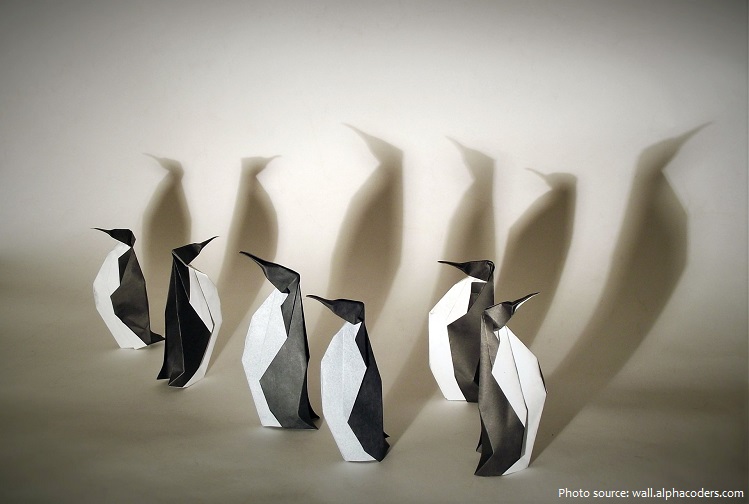
The best-known origami model is the Japanese paper crane. In Japanese culture, it is believed that its wings carry souls up to paradise, and it is a representation of the Japanese red-crowned crane, referred to as the “Honourable Lord Crane” in Japanese culture. It is often used as a ceremonial wrapper or restaurant table decoration. A thousand orizuru strung together is called senbazuru, meaning “thousand cranes”, and it is said that if someone folds a thousand cranes, they are granted one wish.
Origami paper, often referred to as “kami” (Japanese for paper), is sold in prepackaged squares of various sizes ranging from 2.5 cm (1 in) to 25 cm (10 in) or more. It is commonly colored on one side and white on the other – however, dual coloured and patterned versions exist and can be used effectively for color-changed models. Origami paper weighs slightly less than copy paper, making it suitable for a wider range of models.
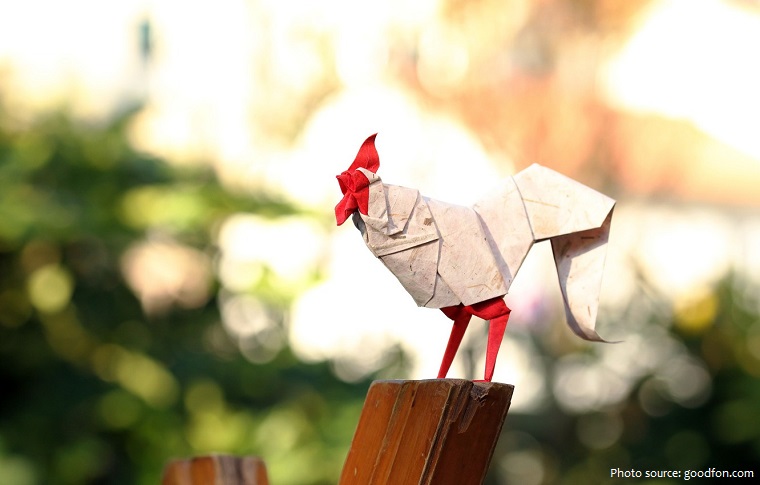
In addition to the more common still-life origami, there are also moving object designs – origami can move in clever ways. Action origami includes origami that flies, requires inflation to complete, or, when complete, uses the kinetic energy of a person’s hands, applied at a certain region on the model, to move another flap or limb.
Modular origami consists of putting a number of identical pieces together to form a complete model. Often the individual pieces are simple, but the final assembly may be more difficult. Many modular origami models are decorative folding balls such as kusudama, which differ from classical origami in that the pieces may be held together using thread or glue.
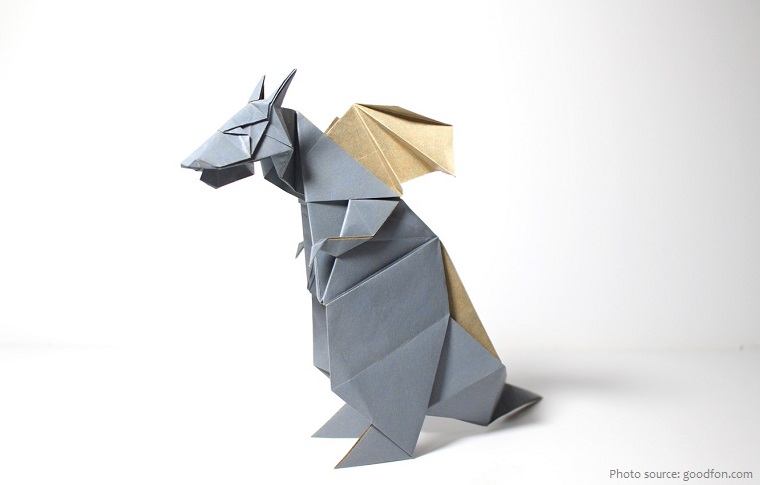
Wet-folding is an origami technique for producing models with gentle curves rather than geometric straight folds and flat surfaces. The paper is dampened so it can be moulded easily, the final model keeps its shape when it dries.
Pureland origami adds the restrictions that only simple mountain/valley folds may be used, and all folds must have straightforward locations. It was developed by John Smith in the 1970s to help inexperienced folders or those with limited motor skills.
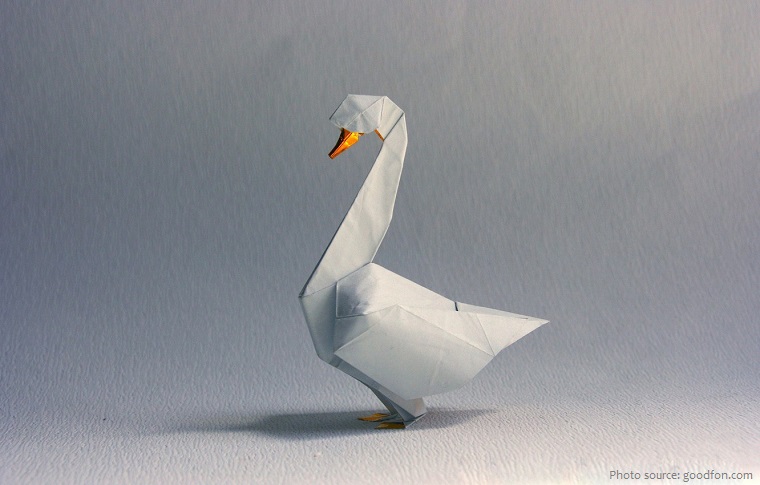
Origami tessellation is a branch that has grown in popularity after 2000. A tessellation is a collection of figures filling a plane with no gaps or overlaps. In origami tessellations, pleats are used to connect molecules such as twist folds together in a repeating fashion.
Copyright in origami designs and the use of models has become an increasingly important issue in the origami community, as the internet has made the sale and distribution of pirated designs very easy.
In Blade Runner, Gaff folds origami throughout the movie, and an origami unicorn he folds forms a major plot point.